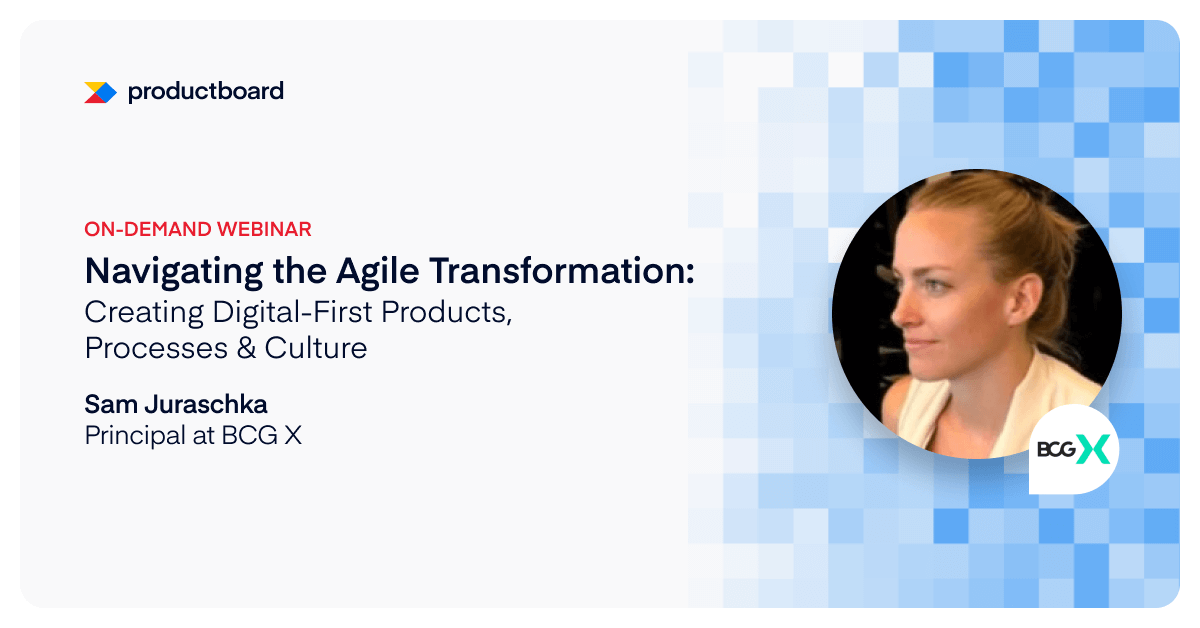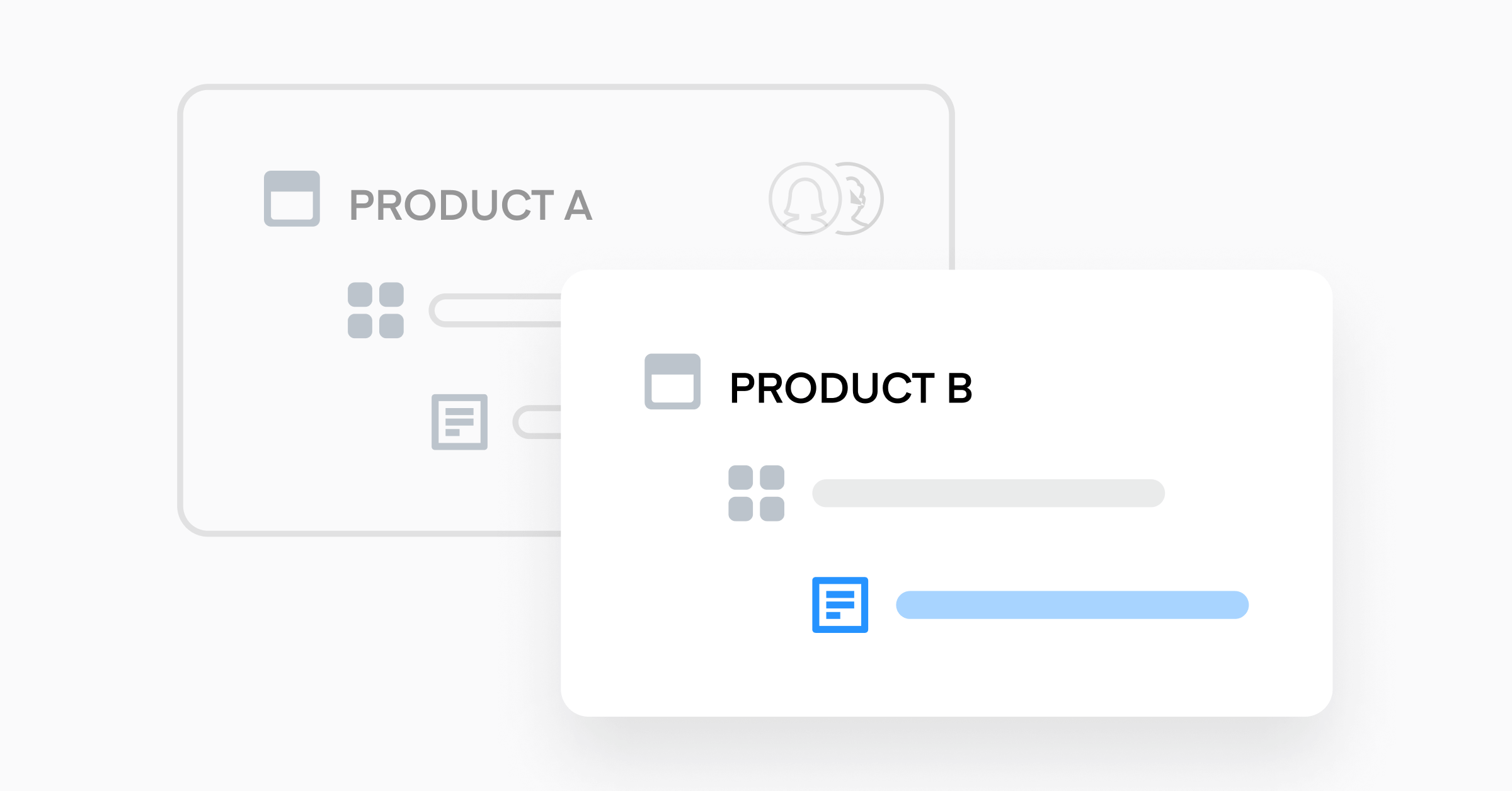Creating Digital-First Products, Processes & Culture in Healthcare, B2B, and Logistics

Navigating the Agile Transformation
Digital transformation through product management is the answer to slow, siloed operations and stunted growth. But in industries like healthcare and pharmaceuticals, with decades and even centuries of business practices baked into how things get done, transformation often starts out looking a lot like unpredictable, unmanageable disruption.
And that’s because it is—at least, when a company doesn’t have the tools and strategic support necessary to evolve. When implemented and integrated effectively, shifting to a product-led strategy injects agility and accountability into all areas of the business. It empowers organizations of every size to embrace new technology, enhance client experiences, become more operationally efficient, and improve the quality of the entire product portfolio.
BCG X, BCG’s tech build and design unit, partners with clients to build impactful solutions, and has been recognized as a leader among AI service providers and customer experience strategy consultants. BCG X collaborates with clients, startups, and other partners to develop new ventures, explore market opportunities, and drive digital transformation in a variety of industries. They’re known for their expertise in digital product development, customer experience design, and digital strategy consulting, and use agile methodologies, design thinking, and cutting-edge technologies to accelerate innovation and bring disruptive ideas to life.
During a recent Productboard webinar, BCG X Principal Sam Juraschka discussed the criticality of setting up a company culture that cares about continuous feedback—not just shipping MVP products as frequently as possible.
Evolving from Project-Driven Roadmaps to Product-Focused Growth
“What I see most often is that [companies that are] a project management organization or PMO are contractor-heavy or vendor-heavy,” said Juraschka. She says that while they may possess talented in-house teams, their culture is rooted in stringent planning and blind commitment to projects long before the execution stage. Ongoing feedback becomes incomplete and unheard without a way to integrate that feedback into development, and it’s difficult for these organizations to manage scope without blowing up timelines and other expectations.
“Often [these companies] are outsourcing their tech and build, or their design. They use agencies or dev partners, and that’s how they get things built…what I have found with project-led teams is that planning can drag out for months.” The same is true, she says, for early growth-stage companies and enterprise organizations still relying on the “waterfall” product development methodology.
Juraschka points out that project-first companies usually have to scope everything about a product upfront, making it incredibly difficult to adapt to changing market needs without exceeding budget and bandwidth. Adjusting scope and timelines is painful and slow, usually resulting in rigid development processes, and integrating user feedback and research is often overlooked, hindering a company’s ability to meet customer demands effectively.
The shift from project-driven roadmaps to product-focused growth will, as a result, present more of a challenge to providers that rely heavily on outsourcing for tech build and design. On top of lengthy planning processes, they lack flexibility and adaptability because of their dependence on external partners and agencies. Data and feedback can get lost in translation, leading to inaccurate market analysis and ill-informed business decisions.
The key to success in this transformation lies in setting up a culture that prioritizes feedback and develops internal themes around it, says Juraschka.
Transformation Roadblocks, Research, and Results
Product teams have overcome various roadblocks during agile transformation. Traditional project management approaches are known to create process inefficiencies, resistance to change, and missed opportunities, all of which hinder growth and customer satisfaction. When organizations run products like projects, they run into a common set of roadblocks:
Research and planning. The research and planning phase presents several challenges when developing a product. Project-based teams may experience prolonged planning processes, lasting up to six months, to gain alignment among stakeholders. As teams receive the green light, they sometimes overscope the build, neglecting phasing and user needs.
Development and deployment. In the development phase, forcing project teams into product roles without proper training leads to product management resembling a project. Many companies lack dedicated product talent, making it essential to transition roles towards a product-first approach. Integrating user testing becomes difficult due to limited time and resources.
Testing and learning. Test and learn processes are often designed to prioritize launching and moving on to the next project, leaving little room for feedback capture and implementation. Valuable feedback can be lost in meeting notes, emails, or the minds of team members. To foster a culture of improvement, companies must prioritize feedback and identify emerging themes to address customer needs effectively.
Businesses that introduce prioritization frameworks are better equipped to embrace agile methodologies during planning, and incorporate user-testing in build sprints. By adopting these strategies, teams can develop a transparent and customer-centric approach to product development—one that provides clarity on the broad scope of a company’s portfolio, while capturing the details of each phase of the product lifecycle.
Transitioning from a project-based organization to a product-based one involves four key themes, according to Juraschka. First, it requires building a culture from the ground up that treats the planning stage itself as a product, using prioritization frameworks to gain buy-in and highlight the benefits of a product-focused mindset.
Second, Juraschka says that investing in training and cultivating the right talent is crucial. Acquiring team members with the skills you need may not always be feasible—identifying existing employees who are eager to transition into product roles, and offering opportunities to shadow experienced team members, can be the right way to foster individual growth that contributes to the overall success of the business.
Third, it’s essential to build a strong case for iteration. Companies can initiate this process by conducting regular user testing to gain valuable behavioral and market insights, and understand what is manageable versus what needs more consideration before ending up on the roadmap. According to Accenture, 81% of consumers will prefer companies that offer personalized experiences by the end of this year—a number that’s guaranteed to grow, and that will do so alongside increasing expectations for those experiences to be immediate.
Finally, developing a repeatable process tailored to the organization’s needs is vital. This entails incorporating user testing during the early planning phase and finding ways to prevent overburdening the team.
Product-Led Operations in Healthcare, Logistics, and B2B
When providers lack a product-centric approach, they struggle to understand their target markets, and often fail to set realistic, trackable goals—let alone achieve them. Narrowing a product team’s view to individual projects and tasks creates process inefficiency, change resistance, prioritization bias, missed opportunities, and disconnected tech stacks. Together, those roadblocks snowball into poor planning, lost revenue, and unmet customer expectations. Organizations should aim to cultivate a product-centric mindset, making sure their main product is not just a website explaining their services, but instead, a dynamic and user-focused solution.
Juraschka shared three valuable examples of how healthcare, logistics, and B2B providers have used Productboard to successfully transition from project- to product-first.
An Agile Planning Framework for Enterprise Healthcare
In the healthcare industry, product teams have to consider the needs of patients before all else. But between their product roadmaps and the people under care are the frontline professionals managing those patients, the hospitals and organizations they work for, the IT and engineering teams that build the tech, and the widespread network of investors involved across the board.
Healthcare product teams need transparency into data, feedback, and research to develop successful solutions that cater to the specific needs and preferences of the people they serve. And because healthcare is already so customer-centric, adopting and adapting to relevant technologies is a natural next step in the industry’s progress. One hospital group she worked with had been relying on vendor-driven websites with limited iterations, and a lack of focus on user feedback. To change this, they formed a cross-functional team and introduced an agile planning stage lasting eight weeks. This time-boxed approach allowed them to explore building in-house products, while prioritizing user feedback even in the planning phase.
Custom Prioritization for Fortune 500 Logistics
Logistics players, often operating in heavily technical industries, need to align their work with company goals to ensure efficient and customer-oriented product development. The logistics player Juraschka discussed struggled with a waterfall approach, relying on a large backlog of leadership ideas with little integration of customer feedback. To address this, they used Productboard’s customer prioritization framework, organizing their roadmap according to company goals. This helped them align their work with broader organizational objectives, gaining buy-in from stakeholders who could now understand the rationale behind different product decisions.
User Research and Design Thinking for B2B Providers
One B2B platform was keen to transition from a project management-first approach to leading with product management. They had dedicated team members eager to take on user research roles, but they were initially uncomfortable with adjusting plans based on user feedback. By incorporating user testing into their workstreams, conducting qualitative and unmoderated testing, and tracking user feedback in Productboard, they created a culture of user-centricity and continuous refinement.
Transformation challenges can happen across the lifecycle of a product, which underscores why these changes have to be cultural—not piecemeal. “In the development stage, since the scope is so big, there’s limited budget and timelines are aggressive, so it’s hard to even stick to the existing plan,” says Juraschka. “It’s hard to integrate things like user testing. It’s hard to actually do things that you think you want to do in a product-led organization because you just don’t have the time and resources to do it.” That’s where Productboard can provide a sophisticated but simple platform to manage the transition away from projects—with a platform to support the four pillars of product-led business, even teams with limited resources can create processes that support iteration, innovation, and improved experiences.
As businesses evolve and adapt to meet the ever-changing demands of a global market, many organizations are recognizing the need to transition from project-based to product-first strategies that are agile, customer-centric, and responsive to real-time feedback. Watch the full webinar recording to hear more about digital transformation through product from BCG X and Productboard.




